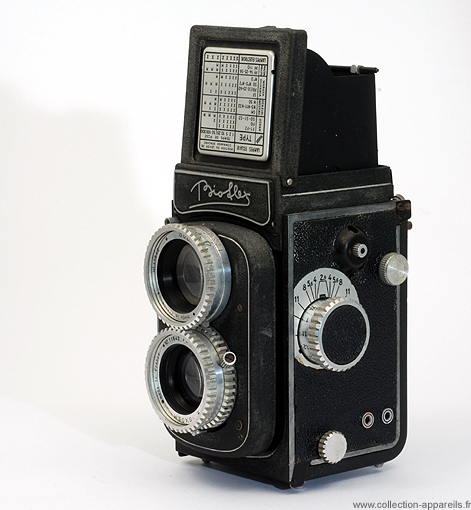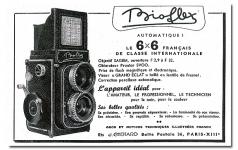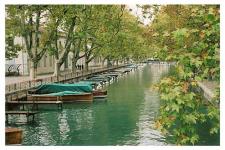|
Alsaphot Bioflex |
Manufactured or assembled in France from (Circa) 1954 to (Circa) 1959.
Index of rarity in France: Rare (among non-specialized garage sales)
Inventory number: 10372
See the complete technical specifications
Chronology of cameras Alsaphot
The Paris-based company Prélux, the creator of Bioflex, made contact with the Alsaphot factory in Angers in 1954 to handle its assembly. This continued until 1962 (source: Les Fondamentaux n°74 of the Club Niepce Lumière on Henri Lapart). It's a 6 x 6 twin-lens reflex camera that accepts both 120 and 620 films. The shutter is a Prontor-SV.
The aperture and shutter speed values are visible through the toothed rings on the lens. Film advance is automatic, controlled by a large button with an extendable crank. The controls appear to be designed for use with thick gloves, and the handling is not comfortable.
The initial production used SAGEM lenses (Guépar and Jaguar with the same serial numbers). The Jaguar 2.9 featured a 4-lens optical formula.
On the earliest models, the lever (more like a button) used to manipulate the toothed ring for shutter speeds was very small. It was later extended for better ergonomics. Interestingly, even though this part of the production had an automated film loading system (with three positions) and a frame counter, there was an inactive window. This window disappeared later in the production run.
The second part of the production used BOYER lenses (Topaz and Saphir with different numbering). The Saphir 3.5 featured a 3-lens optical formula. The exact date of the switch is not known, but the 1959 France Photo catalog only listed models with Jaguar lenses. The inactive window reappeared. The frame counter and its mechanism remained, as did the automatic film loading. They likely disappeared towards the end of production, probably to reduce costs. It's worth noting that the markings for the automated loading system remained despite the mechanism being removed. It took the latest models to restore some consistency.
The Bioflex cameras did not enjoy significant commercial success, and the selling price gradually declined. On the film advance and shutter cocking wheel, the device for double exposure capability is removed. On the rotating bakelite knob, the mechanism (a small metal axis placed in its center) that allows unlocking for the deployment of the small crank disappears, along with the crank itself. Some units only incorporate the removal of the mechanical counter, while others, presumably the later ones, combine all the regressions.
The Bioflex cameras were not numbered. The main identifier in this production is the lens numbers, but for the Boyer lenses, the chronological order of lens numbering does not always correspond to the small changes encountered.
(* According to catalogs, their presence was confirmed until 1960.)
This variant of the Bioflex has a dial marked "Chargement - S - Prise de vue" (Loading - S - Shooting) and a two-pin flash socket (Sync M and X).


Side view showing the flash plug-in. The indications on the hood are for the shooting with the flash, depending on the kind of lamps and the selected shutter speed.
Interesting links or bibliography :
 de 1956 |
Add a link or element of bibliography, a picture taken with this camera, a picture of box or an ads about this camera
Your photos taken with the same camera:
Cameras from Ebay France (Alsaphot) (Uploaded each 3 hours)








